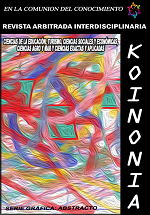Sensory marketing as a persuasive strategy for customer loyalty in the service sector
DOI:
https://doi.org/10.35381/r.k.v7i13.1642Keywords:
Marketing, sector terciario, consumidor. (Tesauro UNESCO).Abstract
The general purpose of this research was to propose a Sensory Marketing Model as a persuasive strategy for customer loyalty in the service sector. From the post-positivist qualitative point of view, the research is developed with the phenomenological method with respect to the research design selected for the study, the emergent one corresponds. The information was collected through the techniques of direct observation and qualitative interviews. For the purposes of the sample, four (4) subjects were taken from among managers and frequent customers of gourmet restaurants in the Municipality of San Francisco. The sensory marketing model has become one of the greatest challenges to be faced by managers, understanding that it is a tool to implement strategies that involve the senses in all the experiences lived by the client during the purchasing process, since this guarantees the effectiveness of commercial strategies.
Downloads
References
Arbaiza Rodríguez, F., y Rodríguez Alayo, L. (2019). La experiencia de consumo en Piura: Análisis de los recursos de Marketing Experiencial en las tiendas de retail moderno de ropa y calzado. [The consumer experience in Piura: Analysis of Experiential Marketing resources in modern clothing and footwear retail stores] Revista De Comunicación, 15, 128-165. Recuperado de: https://n9.cl/n3ew1
Barrios, M. (2012). Marketing de la Experiencia: principales conceptos ycaracterísticas. [Experience Marketing: main concepts and features] Palermo Business Review, 7,67-89. Recuperado de: https://n9.cl/1i73
Hernández, R. Fernandez, C. y Baptista, L. (2014). Metodología de la Investigación [Research Methodology]. Editorial Mc. Graw. Hill. México.
Hulten, B. (2009). Sensory Marketing. Editorial: Palgrave Macmillan.
Lario, J.E (2019). Técnicas de persuasión y comunicación digital. [Persuasion and digital communication techniques] Penguin Random House Grupo Editorial España
Manzano, R., Gavilán, D., Avello, M., Abril, C. y Serra, T. (2012). Marketingsensorial. Comunicar con los Sentidos en el Punto de Venta [Sensory marketing. Communicating with the Senses at the Point of Sale]. Pearson Educación S.A. Madrid. España. Recuperado de: https://n9.cl/q7f2x
Pérez, O. (2012). Neuromarketing. Descodificando la mente del consumidor [Neuromarketing. Decoding the consumer's mind]. Editorial: Ediciones IPAM
Robinette, S. (2017). Marketing Emocional [Emotional Marketing]. Única Edición Barcelona. España.Ediciones 2000.Recuperado de: https://n9.cl/arba0
Sandin, M. (2007). Investigación cualitativa en educación. Fundamentos y tradiciones [Qualitative research in education. Fundamentals and traditions]. BER ULA. Revista Evaluación e Investigación. ISSN 16909712 Recuperado de: https://n9.cl/vcq8h
Strauss, A. y Corbin, J. (2002). Bases de la investigación cualitativa: técnicas y procedimientos para desarrollar la teoría fundamentada [Bases of qualitative research: techniques and procedures for developing grounded theory]. Universidad de Antioquia.
Valdés, S. (2008). Introducción a los Métodos Cualitativos de Investigación. [Introduction to Qualitative Research Methods] Barcelona: Paidós.
Published
How to Cite
Issue
Section
License
CC BY-NC-SA : Esta licencia permite a los reutilizadores distribuir, remezclar, adaptar y construir sobre el material en cualquier medio o formato solo con fines no comerciales, y solo siempre y cuando se dé la atribución al creador. Si remezcla, adapta o construye sobre el material, debe licenciar el material modificado bajo términos idénticos.
OAI-PMH URL: https://fundacionkoinonia.com.ve/ojs/index.php/revistakoinonia/oai.









